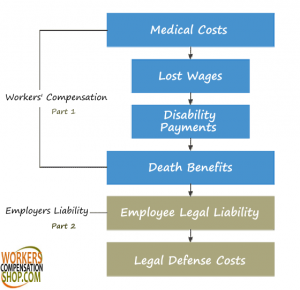Have you ever purchased a used car or found a great deal on a piece of used furniture at a “sale”? Than got home to find out it was not the steal you thought when writing the check. Buying commercial insurance can sometimes be this way. It can be a stressful and time-consuming process, especially if you do not have an experienced insurance agent on your side. A good insurance agent can help you find things you might be overpaying for, or maybe some parts of your insurance policy are not set up right at all.
For example, I recently worked with a client who’s business is in a high risk agriculture industry. They pay a significant amount on their workers’ compensation insurance each year. This business was part of an alternate service organization, which provided payroll services. It than reports the payroll to their workers’ compensation carrier for the companies Pay-as-You-Go reporting. This was two separate companies doing these processes.
In the case of this business we found the workers’ compensation rates were a little high. So to help this business we found a carrier who could save them money on their workers comp coverage. We also found their payroll reporting charges were very high. In this business there are lots of companies that provide work comp and Payroll services. both services. Most of these agencies can offer a better rate because they are getting both businesses. Some try to charge lower workers comp rates, but make up the difference by charging more for the payroll processing side of things or vice versa. Sometimes it is just that a payroll company knows they can build in a little extra that ends up costing you a lot!
For this business we were able to find an aggressive workers’ compensation carrier that provided competitive workers comp rates. This carrier also integrated their payroll services and collected on a Pay-As-You-GO billing plan. By combining the two services, we were able to save this client nearly $25,000 per year on their work comp premiums and $23,000 per year on their payroll processing. Part of this savings was based on the payroll being reported by a company different than the insurance carrier. This disconnect can cause inaccurate reporting. Many companies work with agencies who actually operate the payroll service in house. They do this with the insurance carrier operations to make this fully integrated. This process also helps prevent fraud by acting as an extra verification procedure.
There are a lot of solutions out there for getting coverage in place. If you can get workers compensation in place on a hard to write class code and get it on a pay-as-you-go basis, it seems like a dream come true. However, this is an example of how just looking at the down payment or the workers comp rates alone can end up costing your company significantly. It’s always best to review the rates you are paying for this type of plan. Review what is being charged for all the services provided. Sometimes this is where another company is really making their margin at your expense.



